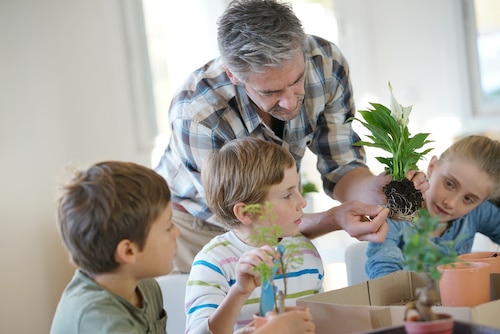Key points:
I live in the state of Michigan, which means that a large chunk of the year is dominated by cold, dreary weather. I’ve noticed that my students tend to lack energy during these months. There’s a kind of blanket lethargy that spreads across the classroom and makes it difficult for them to engage with lessons. Then, on the first sunny day of spring, everything changes. All that latent energy suddenly explodes, and my once sleepy students are now bouncing off the classroom walls with unrestrained excitement.
I’ve found this experience to be quite revealing. Despite the growing urbanization of our society, we humans are still deeply tied to the cycles of nature. As such, I believe the solution for curbing our students’ excess energy lies in reconnecting them with the outdoors.
This might sound daunting, especially if you live in a city where green spaces are few and far between. However, I’ve devised four simple methods for incorporating nature into existing science lessons that foster student curiosity and creativity.
Here are four strategies that will bring nature’s power to your classroom:
- Utilize outdoor environments: Taking students outdoors doesn’t necessarily mean taking them into a forest.A zoo, an aquarium, a botanical garden, even a local park can be a source of nature that can help students gain a new perspective on the world. These spaces allow students to experience different plants and animals, which can be leveraged into existing science lessons. For instance, a local garden could serve as the ideal setting for a lesson on pollination and pollinators, while an aquarium could be used to teach students about different marine ecosystems and how animals adapt to survive in their surroundings.
- Bringing nature INTO the classroom: Is it raining outside? Or are there other reasons it’s just not feasible to go outside? That is OK! Bring nature to your students inside the classroom by establishing an indoor nature center that features specimens, artifacts, and models representing local flora and fauna. This can be a great way to teach students about the unique species native to their state, and by encouraging them to bring in specimens of their own, you get them to invest in their own learning.
- Take a virtual field trip: Virtual resources became popular during the 2020 pandemic, and many offer students the chance to explore wild environments from the safety of their classroom. Take advantage of wildlife cameras that feature African watering holes or lush tropical forests. Have students take notes on what they observe, as well as how different animals interact with each other. These tools also make for great background content for classroom transitions, work time, or brain breaks!
- Use project-based learning: Through project-based learning (PBL), students work on hands-on, real-world projects that are relevant and interesting to them, fostering a deeper connection to the subject matter. For instance, the Blue Apple project, State of Sustainability, tasks students with designing a book about their state that informs readers about how small changes can develop a more sustainable world. It’s a practical lesson that shows students that they can make a real difference in their community!
Incorporating nature into science lessons not only enriches students’ learning experience but also fosters a meaningful connection with the environment. This spring, lead your students into the wild green yonder and show them just how interconnected this world of ours truly is. Then step back and let their curiosity and creativity do the rest!


